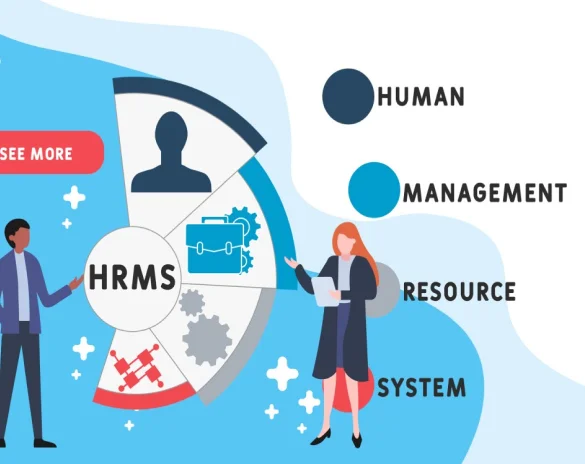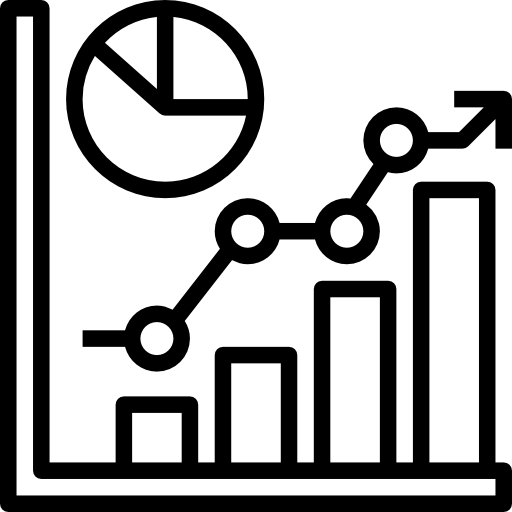HRMS - Human Resource Management System
eMedHub is at the forefront of healthcare software development, dedicated to enhancing patient safety and optimizing healthcare delivery through cutting-edge data management solutions.
HRMS (Human Resource Management System) is a software application that combines several HR functions into one system. HRMS aims to streamline HR processes, improve efficiency, and enhance decision-making within an organization.
Key Features

Employee Database Management
- Centralized storage of employee information including personal details, contact information, employment history, skills, qualifications, etc.
- Secure access controls to protect sensitive employee data.

Employee Self-Service (ESS)
- Allows employees to access and update their personal information, view payslips, apply for leave, submit expense claims, and manage other HR-related tasks without HR intervention.

Onboarding and Offboarding
- Facilitating the onboarding process for new hires, including document submission, orientation materials, training schedules, and provisioning of necessary resources.
- Managing offboarding tasks such as exit interviews, clearance procedures, and deactivating access to systems.


Time and Attendance Tracking
- Recording employee work hours, breaks, overtime, and absences for accurate management.
- Generating timesheets, attendance reports, and analyzing attendance patterns for payroll and compliance purposes.

Performance Management
- Setting employee goals and objectives, conducting performance appraisals, and providing feedback.
- Identifying training and development needs, tracking employee progress, and facilitating performance improvement plans.

Payroll Management
- Calculating employee salaries, deductions, taxes, and benefits.
- Generating payroll reports, managing payroll schedules, and facilitating direct deposit or paycheck distribution.

Analytics and Reporting
- Generating HR metrics, dashboards, and reports to track key performance indicators (KPIs) related to workforce management, employee engagement, turnover rates, etc.
- Analyzing data trends to identify areas for improvement and make informed decisions.


Employee Benefits Administration
- Enrolling employees in benefit programs such as health insurance, retirement plans, and employee assistance programs.

Integration and Customization
- Integrating with other enterprise systems such as ERP (Enterprise Resource Planning), accounting software, and CRM (Customer Relationship Management).
- Customizing the HRMS platform to align with organizational workflows, policies, and branding.
Benefits


Streamlined Processes
HRMS automates many administrative tasks, such as payroll processing, attendance tracking, and leave management, reducing manual paperwork and freeing up HR staff to focus on strategic initiatives.

Improved Efficiency
With centralized data storage and streamlined workflows, HRMS enables quicker access to information, faster decision-making, and smoother communication between HR departments and employees.

Enhanced Accuracy
Automation reduces the risk of human error in data entry, calculation of payroll, and compliance reporting, ensuring accuracy in employee records and regulatory filings.

Cost Savings
By reducing manual processes, paper usage, and potential errors, HRMS helps organizations save time and resources. It also minimizes the need for hiring additional administrative staff, resulting in cost savings over time.

Better Compliance
HRMS systems help organizations stay compliant with labour laws, industry regulations, and internal policies by automating compliance tracking, reporting, and documentation processes.

Improved Employee Experience
Employee self-service features allow employees to access their information, submit requests, and communicate with HR anytime, anywhere, leading to higher satisfaction and engagement levels.

Effective Talent Management
HRMS facilitates recruitment, onboarding, training, and performance management processes, enabling organizations to attract, develop, and retain top talent more effectively.

Data-Driven Insights
HRMS platforms generate valuable insights and analytics on workforce trends, performance metrics, turnover rates, and other key indicators, empowering HR leaders to make informed decisions and strategic recommendations.

Scalability
HRMS systems can scale with the organization's growth, accommodating changes in workforce size, geographic locations, and business needs without compromising efficiency or data integrity.

Integration Capabilities
Integration with other enterprise systems, such as accounting, ERP, and CRM systems, ensures seamless data exchange and collaboration across different departments, enhancing overall organizational efficiency and alignment.

Security and Data Protection
HRMS platforms offer robust security features, including access controls, encryption, and data backups, to safeguard sensitive employee information and mitigate cybersecurity risks.

Remote Work Support
In today's increasingly remote work environment, HRMS systems provide remote access to essential HR services and tools, allowing employees to stay connected and productive regardless of their location.

Major Modules

Centralized Database
Serves as a secure, centralized storage system for diverse organizational data, enhancing accessibility and data management efficiency.

Administration Module
Provides comprehensive administrative tools for managing various aspects of the system and user accounts.

Masters
Acts as a central repository for storing and managing master data such as employee information, organizational hierarchies, and other essential data elements.

Employee Management
Centralizes employee information, facilitating HR tasks such as onboarding, performance evaluation, and records management.

Recruitment
Handles all stages of recruitment, from job postings to candidate selection and integration into the organization, streamlining hiring processes.

Employee Onboarding & Exit
Facilitates processes for new employee onboarding and managing employee exits, ensuring smooth transitions and compliance with organizational protocols.

Time & Attendance Module
Tracks employee attendance, working hours, and leaves, optimizing payroll processing and ensuring compliance with labor regulations.

Leave & Holiday
Handles employee leave requests and holiday schedules efficiently, ensuring smooth operations and proper staffing levels while accommodating employee needs.

Shift Allocation/Rostering
Facilitates creation and management of employee shift schedules, enhancing workforce distribution for operational efficiency & employee satisfaction.

Sales Team/Onsite Team Attendance Tracks
Monitors and records attendance for sales and onsite teams, ensuring accountability and optimizing workforce management strategies.

Work from Home/Outer Location Tracks
Tracks and manages employee activities and productivity when working remotely or from outer locations.

Payroll Generation
Automates the calculation and distribution of employee salaries and wages, ensuring accurate and timely payments.
Ready to Get Started?
Frequently Asked Questions
We have put together some commonly asked questions
What are the key features of HRMS?
Key features of HRMS include employee database management, payroll processing, attendance tracking, leave management, performance appraisal, recruitment management, training and development tracking, and HR analytics.
How secure is HRMS in terms of data protection?
HRMS employs robust security measures such as data encryption, access controls, user authentication, and regular data backups to safeguard sensitive employee information and ensure compliance with data protection regulations.
Is HRMS scalable for growing organizations?
Yes, HRMS is scalable and can accommodate the evolving needs of growing organizations by supporting increased user volumes, additional features, and integration with new systems as the business expands.
How does HRMS handle time and attendance tracking?
HRMS offers time and attendance modules with features such as clock-in/clock-out functionality, timesheet management, shift scheduling, overtime calculations, absence tracking, and integration with biometric or RFID systems to ensure accuracy and compliance with labor regulations.
What level of support is available for HRMS users?
HRMS vendors typically offer various levels of support, including online tutorials, user guides, helpdesk assistance, and dedicated customer support channels to address technical issues, answer inquiries, and provide guidance on system usage and troubleshooting.